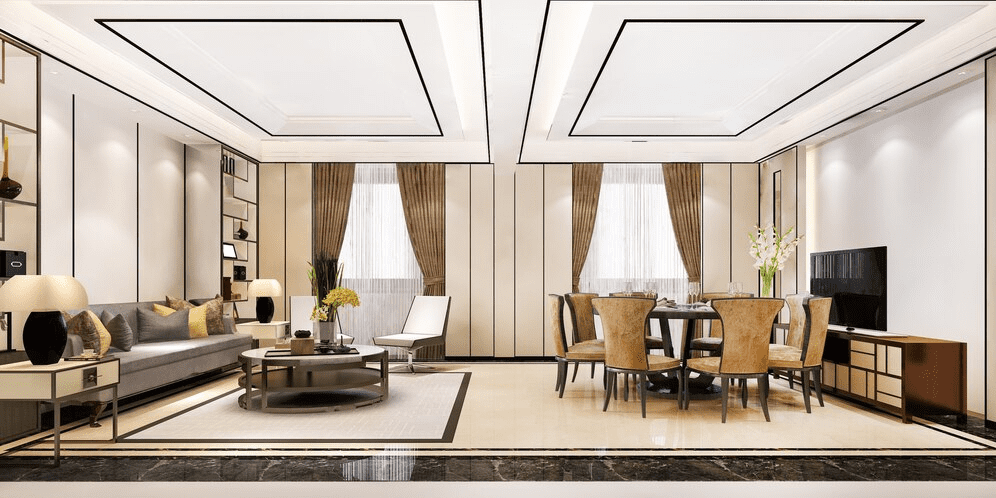How to Become an Interior Designer in India. We cover salary, qualifications, skills, role types, workplace, and duties.
Are you passionate about transforming spaces into beautiful and functional environments? If so, a career as an interior designer in India could be the perfect fit for you. In this guide, we will explore the key parts of becoming an interior designer. This includes salary, qualifications, and vital skills. It covers types of interior designers and the role of an interior designer. It also covers the workplace and the duties of this dynamic job.
Salary Insights.
In India, the experience and expertise of an interior designer influence their salary. Entry-level interior designers can expect to earn between ₹2, 00,000 to ₹4, and 00,000. As professionals gain more skills and experience, their income potential rises. Senior designers can command salaries of ₹10 lakhs per year or more. According to Glassdoor, the average salary for an interior designer is ₹63,250 per month in India.
Qualifications.
To start a career as an interior designer in India, you must earn a bachelor's degree in Interior Design from a top university. This foundation educates aspiring designers. It teaches essential design principles and technical knowledge. It also gives a solid understanding of the industry. Diplomas and certificates in Interior Design are also helpful.
To start a career as an interior designer in India, you must earn a bachelor's degree in Interior Design from a top university. This foundation educates aspiring designers. It teaches essential design principles and technical knowledge. It also gives a solid understanding of the industry. Diplomas and certificates in Interior Design are also helpful.
Types of Interior Designers:
After completing the necessary qualifications, interior designers can specialize in various areas.
- Interior Decorator
- Interior Space Consultant
- Furniture Designer
- Product Designer
- Visual Merchandiser
- Exhibition Designer
- Landscape designer
- Interior Elements Advisor
- Professor Of Interior Design
- Kitchen Designer
- Bathroom Designer
- Industrial Designer
- Film Set Designer
- Display Designer
Role of an Interior Designer.
An interior designer's main job is to make spaces that work well and look nice for clients. Together they help clients discover what they need. They develop design concepts and create detailed drawings. They collaborate with professionals and oversee projects. Their goal is to ensure client satisfaction.

Interior designers do more than make appealing spaces. They must grasp clients' needs and turn them into functional and pleasing designs. Designers work with clients, architects, and contractors. They bring design concepts to life. Their responsibilities include:
-
Conducting in-depth client meetings to grasp requirements
-
Developing innovative design concepts that align with client preferences
-
Collaborating with professionals to ensure seamless project implementation
-
Overseeing the entire design process to guarantee client satisfaction
You will help clients pick the right materials and furnishings. They should match the design vision.
Ensuring that designs follow safety rules and building codes. This is for a secure and functional space.
Essential Skills
Successful interior designers are creative. They also have technical skill and good communication. Important skills for an interior design career include imagination, insights, and design ability. You also need adaptability. You need skill at finding solutions. You need a fresh perspective and good communication.
Successful interior designers have a diverse set of skills that go beyond creativity. Some essential skills for a career in interior design include:
Creativity and Innovation
- Ability to generate original and innovative design concepts
- Visualization of unique ideas and effective communication of design visions
- Thinking to solve design challenges and optimize space functionality
Attention to Detail
- Focus on intricate details that contribute to the design coherence
- Visualization of spatial elements like finishes, hardware, and traffic flow
- Selection of appropriate colors, textures, and finishes to enhance the space aesthetics
Strong Communication and Collaboration
- Clear and effective communication with clients, contractors, and team members
- Active listening, asking pertinent questions, and conveying ideas and concepts
I collaborate with a diverse range of professionals. We create cohesive designs that meet client expectations.
Workplace and Work Environment
Interior designers work in many settings. These include architectural firms, wholesalers, retailers, and companies that offer design services. They also work at design consultancies and construction firms. They even work in the entertainment industry. In entertainment, they design sets for theatre, TV, or film. They may also work as freelancers or start their own design firms.
The work environment of an interior designer is dynamic and diverse. It can range from office settings. There, designers work with architects and clients. It also includes on-site visits for project assessments and installations. Designers often research design trends. They also find materials and make proposals. They also attend client meetings. The work environment can be fast and demanding. It needs creativity, attention to detail, and time management.
Responsibilities
The responsibilities of an interior designer include:
- Meeting with clients to understand their requirements
- Developing design concepts and presenting them to clients
- Creating detailed drawings and specifications for construction
- Collaborating with architects, contractors, and other professionals
- Overseeing project implementation and ensuring client satisfaction
- Assisting clients with choosing materials and furnishings
- Producing designs, plans, and drawings for interior installation and construction
Documents present the designs. They can be as simple as sketches or as detailed as construction plans. The documents include schedules and attachments.
Follow these steps. Hone your skills. Then, you can start a fulfilling career as an interior designer in India. Success in this field requires continuous learning. You must stay updated on industry trends and deliver exceptional design solutions. These solutions must exceed client expectations.